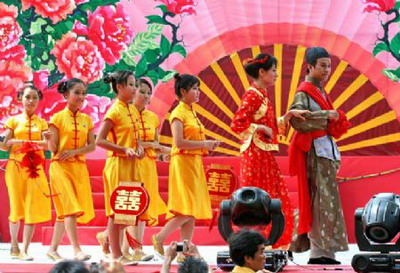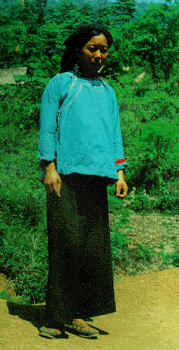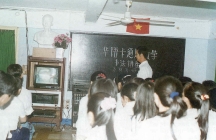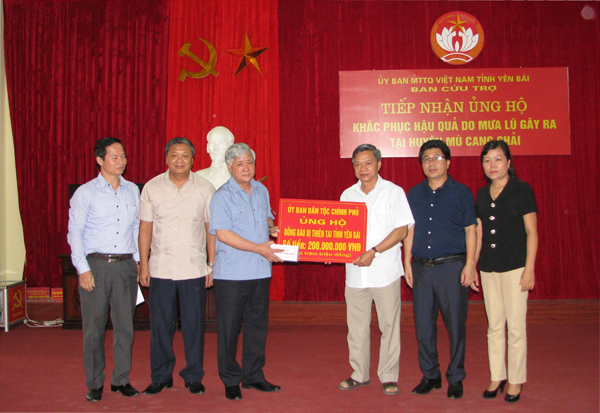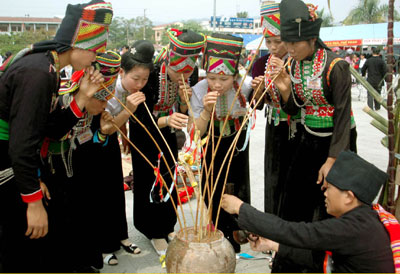The Hoa practice many various occupations including agriculture, handicrafts, trading, fishing, salt-making and work as workers, teachers and cadres, etc. The Hoa farmers have a long tradition of cultivating submerged fields and are highly experienced in all phases of production: use of polish and harrow drawn by couple buffaloes, choice of seeds, designs of farm tools and reaping of rice. Craft occupations among the Hoa are well-known for a long time immemorial.
The Hoa used to concentrate in villages, hamlets or streets to live close together. Of which, the families of the same lineage always gather together. They have built popular houses. with three compartments and two lean-tos or in shape of Han letters (gate) or (mouth) with thatched or tiled roofs. The houses are made of clay, stone or bricks.
Hoa men have adopted the dress like that of the Nung, Giay, Mong and Dao. Hoa women's garments consist of a pair of trousers, a five-paneled vest which fall to mid-thigh or a short sleeve shirt with five panels. The Hoa prayers have their own uniforms used during the rituals. Hat, conical hats and umbrellas are ordinarily used every day.
In a Hoa family, the husband (the father) is the head. The right of inheritance is reserved for the sons only. The eldest son always takes the greater part of property. Vestiges are still visible that about 40-50 years ago, there were many extended families existed for 4-5 consecutive generations, with dozens of members each. Nowadays, the Hoa live in each small family. Parents decide the marriage of their children, and early marriage is common. The choice of husband or wife is often directed to the strong desire to have family equal in social standing or dictated by business considerations.
According to custom, funeral must go through following rituals: informing mourning, wearing mourning clothes, wrapping corpse, opening road for the dead soul, burial, bringing the soul to the "country of the Buddha to the west" and the last is going out of mourning.
The Hoa believe in the existence of' the souls and the spirits. The dead parents and grandparents are worshipped at home. They are also profoundly influenced by Confucianism, Buddhism and Taoism. In all villages and hamlets they have temples, pagodas and shrines built for veneration's.
The Hoa like to sing "mountain songs" (or san co) with diverse topics on love, life, native land and spirit fighting against natural calamities and enemies. Hoa theater is also a unique genre attractive to all the people. Musical instruments comprise trumpets, flutes, castanets, cymbals and string instruments such as two-or three-string viola, zither and 36-string zither. At festivals, the Hoa

